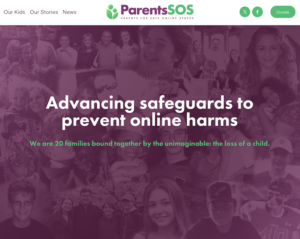 I was chatting with a mom this week about her son who has a diagnosis of adhd, and was suggesting some environmental interventions that might help him with his rage and aggression (he is currently waitlisted). I mentioned research proven techniques for aggression such as reduction in violent media content, increased exposure to movement and nature, and more human connection and touch. The Mom kept saying to me “You’re not getting it; he has adhd. It’s HIM that has the problem, not ME”! As we talked, I could hear kids screaming in the background, along with a blaring TV, while she relayed to me that her son was hitting her, and had recently tried to choke his younger sister. This child is six years old, and already on stimulant medication. I wish I could say this situation is rare, but I can’t. Of the 28 children on my early intervention caseload, half have behavior and/or self-regulation disorders. This article explores how depriving children of the four critical factors for optimal development and learning – movement, touch, human connection, and nature, could be resulting in the rise in child mental illness.
I was chatting with a mom this week about her son who has a diagnosis of adhd, and was suggesting some environmental interventions that might help him with his rage and aggression (he is currently waitlisted). I mentioned research proven techniques for aggression such as reduction in violent media content, increased exposure to movement and nature, and more human connection and touch. The Mom kept saying to me “You’re not getting it; he has adhd. It’s HIM that has the problem, not ME”! As we talked, I could hear kids screaming in the background, along with a blaring TV, while she relayed to me that her son was hitting her, and had recently tried to choke his younger sister. This child is six years old, and already on stimulant medication. I wish I could say this situation is rare, but I can’t. Of the 28 children on my early intervention caseload, half have behavior and/or self-regulation disorders. This article explores how depriving children of the four critical factors for optimal development and learning – movement, touch, human connection, and nature, could be resulting in the rise in child mental illness.
20 years ago, I did not have one child on my pediatric occupational therapy caseload with a mental illness, yet in a 2007 published document, Charlotte Waddel with the Faculty of Health at Simon Fraser University in British Columbia reported that one in six children aged 8-18 years have a diagnosed mental illness, with many on psychotropic medications (stimulants, antidepressants, antianxiety, sedatives, antipsychotics). Autism is now 1 in 88, and adhd 1 in 8, with depression and anxiety diagnoses soaring. The vast majority of child mental illness research focuses on investigating biological factors, as opposed to environmental causes, as this type of research receives generous funding from pharmaceutical corporations. Investigating biological causes for child mental illness is also more “politically correct” so to speak, as the blame or causal factor for the child’s behavior is placed on genes, chemical imbalances, diet or any number of other non-human elements. While blame never results in any productive action, finding the causal factor for today’s climbing incidence of child mental illness is imperative, in order to best address how to prevent and treat it. The presumption by health and education professionals that a child with behavior problems must be “mentally ill”, is a new trend, one that and is rapidly sweeping across North America. 95% of the world’s Ritalin is consumed in North America, where children use an average of 7.5 hours per day of entertainment technology. Sedentary, neglected, isolated, indoors, and exposed to violent media content may be a factor in this rise of child mental illness. Continuing to focus on finding the gene or chemical cause of child mental illness not only wastes precious time and money, but also fails to address the real problem, and consequently results in child behaviors getting worse, much worse.
Regardless of the billions of dollars spent looking for a biological cause for child mental illness, at this point in time there are no findings that confirm any neuroanatomical, neurochemical, or genetic difference in children who have a mental illness diagnosis, and children who don’t. The exception is children with a mental illness diagnosis who were put on psychotropic medications; a significant percentage of these children show structural changes to their brains, in particular, reduced brain size. Numerous studies show that children who suffer abuse or neglect also have different brain structures (smaller brains), than children who aren’t abused or neglected. Children who are sedentary, don’t play outside, and are overstimulated with technology, also show differences in brain structure when compared to children who exercise, are exposed to nature, and stay within technology recommended limits of 2 hours per day.
Could overexposure to technology, and the secondary effects on children who are sedentary, isolated, neglected, overstimulated, exposed to violence, nature deprived and detached, actually constitute the primary contributing factors to the observed rise in child mental illness? Current research does not support the idea that children are born mentally ill, we likely make them that way. Rather than helping parents learn more about critical factors which will optimize child growth and learning, many health and education professionals are readily adopting the notion that a badly behaved child must be mentally ill. 50% of referrals to physicians for children who receive an adhd diagnosis come from teachers. In 7 out of 10 cases, physicians recommend stimulant medication for a child diagnosed for adhd, in deference to recommended therapies. When research clearly shows that access to movement, touch, human connection, and nature enhance child attention and behavior, why would these techniques not be our first and foremost interventions?
The new millennium child’s brain and body are undergoing rapid change as a result of overexposure to technology, with secondary long term effects yet to come. Consequent behaviors are difficult for parents and teachers to manage, resulting in the current trend to diagnose and medicate children. The New England Journal recently reported that the ways in which we are presently raising our children to be sedentary, are no longer sustainable. In order to ensure sustainable futures for all children, health and education professionals need to shift their focus away from diagnosing and medicating child behavior, and toward supporting and educating parents. Encouraging technology reduction, as well as more movement, touch, human connection and nature, will go a long way toward growing a healthier and happier child.
Zone’in Foundation Series Workshops for parents, health and education professionals present current research and raise awareness regarding the impact of technology on child development and learning. The three day FSW’s are created by occupational therapist Cris Rowan, author of “Virtual Child – The terrifying truth about what technology is doing to children”, and cover the following topics: sensory processing, motor development, attachment and addictions, technology balance, moving to learn, and school redesign for success. The FSW’s will be offered in five locations in 2012/2013: Prince George BC, Edmonton AB, Saskatoon SK, Winnipeg MB, and Dallas TX.
Zone’in Products for elementary aged children address the effects of technology overuse on children, and consist of the following: Zone’in improves attention and self-regulation, Move’in teaches children to print, Unplug’in builds skill and confidence in activities, and Live’in Resource Guide is a media literacy program.
Research references for this article can be located on Zone’in Fact Sheet.




12 Responses
You come dangerously close to blaming parents for their children’s mental illness. The refrigerator mother theory was debunked a long time ago. The research I have read points to both genetic and environmental factors in causing autism. On point we do agree on is that there is not enough research into what those environmental factors are. Your blame technology approach does not fit with my experience. My son was breastfed, baby worn, frequently interacted with by a trained speech language pathologist (myself), and never watched TV. Diagnosed on the autism spectrum at age 2 years 4 months.
Hi Angela,
I’m not saying autism doesn’t exist, but having worked in the field of pediatric OT for 25 years, the children we are seeing now with autism diagnoses do not look at all like the children I saw 25 years ago. So what has changed in the past 25 years to account for the 1 in 88 children we are seeing now? It must be environmental, as genetics cannots change with this rapidity. Causality aside, we do know that autism improves with attachment techniques (Mukkades 2000), as well as with exposure to nature and movement (Faber-Taylor 2004, Ratey 2008). So why are the health and educaton professionals not using these tried and true techniques as a primary interventions prior to diagnosis, which is often followed by medication? I’m not blaming parents, but if we can help parents unplug themselves and their children, and teach them how to form a primary attachment bond, play with them outside, build them awesome playgrounds…would we see the level of autism we are seeing now?
I absolutely agree with this article. One more consideration is processed food! Add the junkmany children are consuming and the unnourishing diets many mothers have during pregnancy, and it paints an even gloomier picture. Starting off life with poor nutrition, then leading a sedentary lifestyle with overstimulation from technology is a recipe for disaster. I feel so sad for these children.
Hi Kinderteacher,
Unhealthy diets are associated with tech overuse, so again a message to reduce the use of technology with our young children.
Cris
I am an Occupational Therapist and have studied, researched and attended and participated in many conferences regarding ADHD, AUTISM, MENTAL HEALTH ectera. There are many studies, findings, research and scans that prove that ADHD has a neurologic basis related primarily related to the prefrontal cortex. There are scans that compare the ADHD brain and the normal childs brain and they prefrontal orbital cortex is smaller (not when its medicated). It has trouble telling the amygadal to “shut up”. Therefor the child acts impulisve and has trouble controlling himself, just like a person who has a head injury. This is not because of video games and abuse or neglect, this is neurological. True ADHD is neurological and more research on the brain is showing this over and over again. ADHD children are highly sensitived to the environment, but its not the parents fault that a child had or gets ADHD.
Hi Tracy,
The only research I know of that shows any neurochemical, neurostructural, or biological difference between an adhd brain and that of a normal child is when the child was taking stimulant medication, which stunts the growth of brain and body by 10%. If you have a link to the research you are talking about, please include in your blog response?
When a primary parent is holding their child and facilitating attachment bonding, the preorbital frontal cortex (pofc) lights up like a beacon. When attachment bonding is insufficient, there is a disruption in the development of the pofc. So what is attachment deficit, and what is attention deficit?
Again, this is not a “fault” issue, we need to get over this. Lets look at the environmental interventions we can use to improve attention e.g. movement, touch, nature and human connection (as noted above), and teach these to parents, health and education professionals.
My Fact Sheet link is below, which includes a section on mental illness and use of psychotropic medication. Fact Sheet is bulleted topically, which research references alphabetically listed at end of doc.
http://www.zoneinworkshops.com/fact-sheet/zonein-fact-sheet/
Do we really want to be One Nation Under Therapy? Just heard that by the end of 2020, if diagnostic levels keep climbing, half of Canada will be clinically depressed.
I am an Occupational Therapist and I have studied ADHD, Autism, Bipolar Disorder and have participated and attended many conferences in Canada and there are many studies and findings and research that have found a neurological basis to ADHD. In fact that are now findings and scans that prove this. Many children with ADHD have different Brain structures (particularly as it relates to the prefrontral cortex). Research continues in this area. Many parents suffer from being blamed for their childrens behavior. When in fact these children are not neglected, abused, playing video games and are given all oppotunties. That mother that says “you don’t understand its not me its him”. Could be right on. Often these children change the environment. Children with ADHD are very sensitived to their environment, but true ADHD is not caused by the environment there is a proven neurological basis.
Hi Tracy,
I’m not aware of these studies. Can you give me some references?
Cris
Dear Chris,
As a pediatric OT many years your senior I appreciate what you are trying to do in terms of advocating for children to get busy, stay connected, and self-regulate. I am however quite concerned by statements such as “Regardless of the billions of dollars spent looking for a biological cause for child mental illness, at this point in time there are no findings that confirm any neuroanatomical, neurochemical, or genetic difference in children who have a mental illness diagnosis, and children who don’t”. Perhaps you should take a more critical look at this literature but use an interdisciplinary perspective and you will find the literature is in fact most robust and clearly documents neuroanatomical, physiological, and biogenetic differences in many of the kiddies we work with at the macro and micro levels. These differences play a key role in brain development and clinically in the design of new and effective diagnostic and intervention approaches. Turning down technology is a good idea in many cases, but it is only 1 piece of a very complicated puzzle. Tuning into state of the art peer-reviewed medical and clinical research is a pretty important part of what we should be doing as clinicians to best serve our clients.
Hi K,
I’d love to see this robust research, and also analyze if in fact the researchers accounted for environmental influences e.g. dysfunctional attachment, sedentary lifestyle, tactile deprivation, nature-deficit and a host of other factors that directly impact on brain development. Chicken or the egg??
Much of child mental illness research is conducted and funded by pharmaceutical corporations. Conflict of interest is rife in this area, and results either not reported or hidden. Many of these giants are now being sucessfully sued for not reporting negative results, off label marketing to children, ghost writing, and much much more.
Valid research e.g. large sample size, long term studies, double blind, replicated at least once… is hard to find in the area of mental illness. One such study was done in Australia called the Raine ADHD Study, with surprising results! Excerpt and link below.
“The ADHD Study, the first of its type in the world, found that long-term use of drugs such as Ritalin and dexamphetamine may not improve a child’s social and emotional well-being or academic performance.”
http://www.health.wa.gov.au/press/view_press.cfm?id=884
Cris
Cris
Chris, you can start with ADHD hand book for Diagnosis and Treatment by Russel A. Barkley and research from there. Far more research than you could do in your lifetime from well know scientists, who all took into account the enviornmental influences. Trust me your thoughts are not Unique. The debate began a long time ago. Your comments later are much more thoughtful than your initial article. Blaming parents, awfuls way to promote a business. You need to respect all peoples opinions and keep on learning, you are not done. Experience will help. YOu work with these children for years and years and you will learn not thru reasearch but with your own eyes what helps and how medication can help too! Isn’t Carl Jung who said the only people who are educated are the people who are willing to learn and learn to change. Be open minded to all advancments in medicaine, your therpay will help along with other professional help too!
I’m not blaming parents, just encouraging health and education professionals to include parents when we “treat” children with mental health issues. Please see May 2013 newsletter feature article “Death of teh DSM” for additional explanation on my thoughts regarding child mental illness diagnosis and medication.